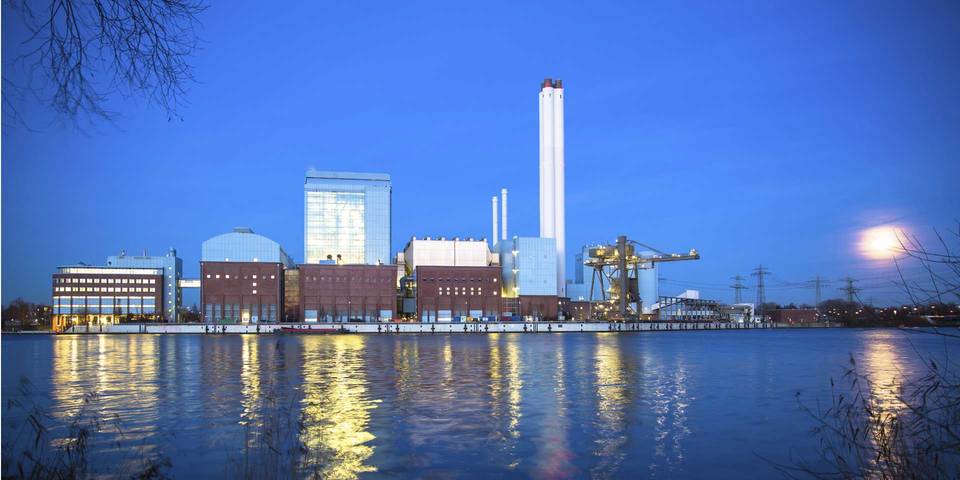Industrial and cogeneration plant

Cogeneration plants are industrial installations for generating electricity and heat in a connected process known as cogeneration.
Cogeneration plants are located near urban areas, where they supply hot water for district heating.
Basic principle: As with a traditional thermal power plant, the primary energy is converted to electricity using a closed water-steam cycle. Fossil or bio fuel is burnt to heat the water and turn it to steam in the boiler. It then passes through the superheater to raise it to the highest possible temperature. The live steam expands in a steam turbine to drive the generator. The steam turns to liquid in the condenser. The condensed steam is fed to the condensate tank and the condensate pump returns it to the feedwater tank, where it is mixed with the prepared feedwater from the demineralised water tank. In the feedwater tank, the water is heated and thermally deaerated via the deaerator dome. The tank supplies the feedwater pumps, which often first supply the water to the boiler via the feedwater preheater.
Industrial power plants are power plants owned by industrial companies, primarily to cater for their own energy requirements.
This energy is mainly electrical and thermal, but also mechanical energy (particularly rotational energy). Most of them are back-pressure plants, as process steam is often needed in addition to electrical energy.
Cogeneration is an ideal solution when using thermal energy in the form of process energy (particularly process steam), or if only heating factories and commercial premises by using waste heat.
The following are classed as industrial power plants:
- The energy plants themselves (i.e. plants to supply secondary energy such as heating water and steam or electricity)
- Cooling and cold water plants to supply compressed air for use as working or control air
- Waste water treatment plants (also known as utilities)
There are also process plants, which are often very energy-intensive, particularly those which use thermal processes. Because of the various types of steam pressure network and intermittent consumption of electricity, the process requires sophisticated regulation and control systems, both for steam generators and for electricity generation and distribution.
